
Jephthah's Daughter: Midrash and Aggadah
Jephthah’s daughter is portrayed in midrash as a wise and practical woman, well-versed in halakhah and the Torah. The rabbis place the blame for her murder on her father and the High Priest Phinehas.
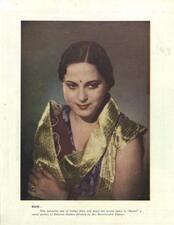
Jewish Actresses in Bollywood
Jewish Indian actresses had a significant impact on the world of early-twentieth century Indian cinema, despite the country’s small Jewish community. These women persevered through several challenges in the industry to act in a wide variety of roles, and for some to have successful production houses of their own.
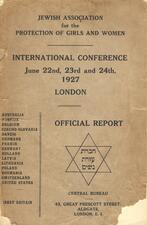
Jewish Association for the Protection of Girls and Women.
International Conference, June 22nd, 23rd, and 24th, 1927. London.
Official Report. Central Bureau. 45, Great Prescott Street, Aldgate, London, E.1.
Australia, Austria, Belgium, Czecho-Slovakia, Danzig, Denmark, France, Germany, Holland, Latvia, Lithuania, Poland, Roumania, Switzerland, United States, Great Britain.
Jewish Association for the Protection of Girls and Women
The Jewish Association for the Protection of Girls and Women (JAPGW) was an Anglo-Jewish organization in the nineteenth and twentieth centuries dedicated to providing Jewish women and girls an avenue out of prostitution. Founded by Constance de Rothschild Battersea and several other prominent Anglo-Jewish women in the 1880s, the JAPGW was initially one of the few organizations to acknowledge the plight of Jewish prostitutes in Britain, particularly among immigrant communities, but grew to be a multifaceted, nationally recognized organization.

Jewish Environmentalism
Women have been central to the development of Jewish environmentalism in the United States. They founded organizations, wrote books, educated their communities, grew food, and advocated for better policies. These women saw their environmental ideals as directly connected to their Judaism and realized that our future may depend on this work in the face of the climate crisis.
The Jewish Family in Early Twentieth-Century United States
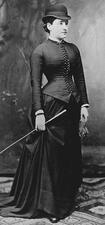
Jewish Feminism in Post-Holocaust Germany
Jewish feminism in Germany today is an expression of a wide-reaching renewal of Judaism occurring in many European countries since the early 1990s. German Jewish feminists built on the historical tradition of the Jewish women’s movement in pre-Holocaust Germany and has since taken many paths.
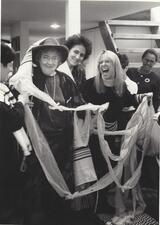
Jewish Feminism in the United States
Challenging all varieties of American Judaism, feminism has been a powerful force for popular Jewish religious revival. The accomplishments of Jewish feminists have transformed American Jewish life, even as the ultimate goal of gender equity and shared power has yet to be fully realized.
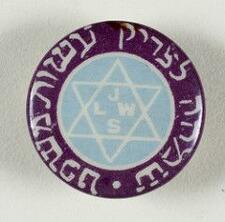
Jewish League for Woman Suffrage
The Jewish League for Woman Suffrage (JLWS) was the only Jewish women’s organization in England—and the world—devoted exclusively to obtaining both national and Jewish suffrage for women.
Jewish Migrations to the United States in the Late Twentieth Century
Jewish Mothers of the Plaza de Mayo
The Jewish women who formed part of the Mothers of the Plaza de Mayo were pivotal to the human rights movement in Argentina, fighting for truth and justice for victims of the 1976-1983 dictatorship that resulted in 30,000 disappeared, tortured, and killed.
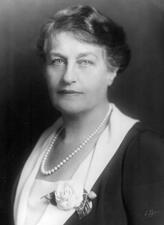
Jewish Museums in the United States
American Jewish women have played an outsized role in the foundation of Jewish museums all over the country. Barred from traditional spaces of power in the early twentieth century, many women—adjacent to power as Rebbetzins, philanthropists, and secretaries of libraries and other Jewish organizations—leveraged their connections to found new kinds of cultural institutions: museums.
Jewish Orthodox Feminist Alliance
JOFA, the Jewish Orthodox Feminist Alliance, was the first Orthodox feminist organization in the United States. Since 1997, it has striven to expand Jewish women's religious and spiritual roles within the parameters of halakhah and to address specific halakhic issues related to women in marriage and divorce. JOFA provides practical suggestions for increasing women's participation in religious rituals and halakhic-theoretical views on modern Jewish observance.
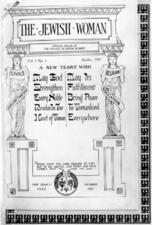
The Jewish Woman
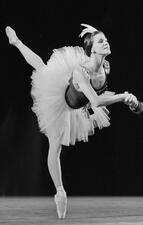
Jewish Women and Ballet in the United States
While fewer Jewish women went into ballet than into modern dance, those interested in ballet studied with gentile classical teacher-choreographers, such as Mikhai Fokine, Michael Mordkin, and Adolf Bolm. They performed in the main ballet companies, including the American Ballet Theatre, the Metropolitan Opera Ballet, George Balanchine’s New York City Ballet, and even Radio City Music Hall’s ballet company.
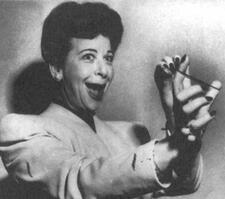
Jewish Women and Comedy
This article looks at the place of American Jewish women in comedy. It chronicles the reasons comedy has been a difficult field for women and looks at the careers of several remarkable women who found success in different eras and forms of comedy.
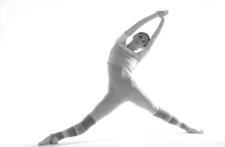
Jewish Women and Contemporary Dance in Argentina
In a period during which Argentinian culture was devastated by political instability and violence, Jewish women created art through contemporary dance. Jewish choreographers Ana Itelman, Renata Schottelius, and Ana Kamien braved political repression and challenged the boundaries of the discipline, making pioneering contributions to the world of contemporary dance in Argentina.
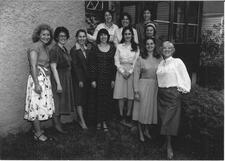
Women, Music, and Judaism in America
Jewish Women Dance Educators and Writers
As in modern dance performance, a disproportionate number of American Jewish women have specialized in dance education and writers, with a longstanding interest in analyzing dance and establishing its place within academic artistic disciplines.
Jewish Women in Animation
Jewish women were active in animation from its first and formative years, and the study of Jewish women working in animation sheds light on the level of integration of ethnic minorities and women into the industry’s labor force.
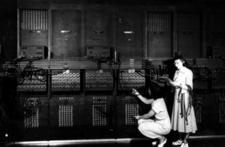
Jewish Women in Computer Science
From hardware to software, from developing new programming languages to revolutionizing applications, Jewish women have been part of significant projects on the cutting edge of computing in the United States.
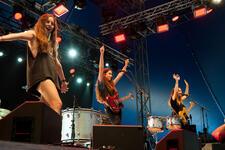
Jewish Women in Contemporary Popular Music: 1950 to Present
Since 1950, Jewish women musicians have moved with the times, performing with bands, as solo acts, and as songwriters. They have included mainstream pop performers and rock, punk, and Riot Grrrl musicians. Some Israeli artists have reached international audiences, often via the Europvision Song Contest.
Jewish Women in Jazz
Jewish women have been involved the world of jazz from its beginnings, as instrumentalists, vocalists, and businesspeople. The degree to which Jewishness overtly affects their music varied, and these musicians’ identities as Jews intersect in interesting ways with other facets of their selves, most notably their femaleness. Beginning in the 1960s and 1970s, Jewish women in jazz took up a wider variety of instruments, and as jazz became more international, Jewish female jazz musicians from around the globe began to come to prominence.
Jewish Women in the Iraqi Communist Party
When Jewish women participated in the Iraqi Communist Party (ICP) during the 1940s, it was at its apex as the largest Communist organization in the modern Middle East. While their numbers are small and many of their names have been lost to history, Iraqi Jewish women participated in the ICP as committed, active, and indispensable comrades.
Jewish Women in the New Testament
The New Testament describes Jewish women’s social roles in the late Second Temple period: in the home, in business ventures (especially textiles), in synagogues and the Temple, serving as patrons of the early Jesus movement, and as suffering from and being healed of various ailments. Despite the variety of examples of women’s agency, many Christian interpreters paint an historically inaccurate picture of a misogynistic culture in order to show Jesus, Paul, and their early movement as progressive on women’s issues.

Jewish Women Partisans
The testimonies of Jewish women partisans present a more complex gendered picture of partisan activism than the conventional portrayal of an exclusively male arena of armed guerillas. Women smuggled guns and ammunitions, fought in armed combat, engaged in reconnaissance activities, mobilized resistance, documented partisan activities, tended the wounded, and rescued and sheltered fellow Jews.


